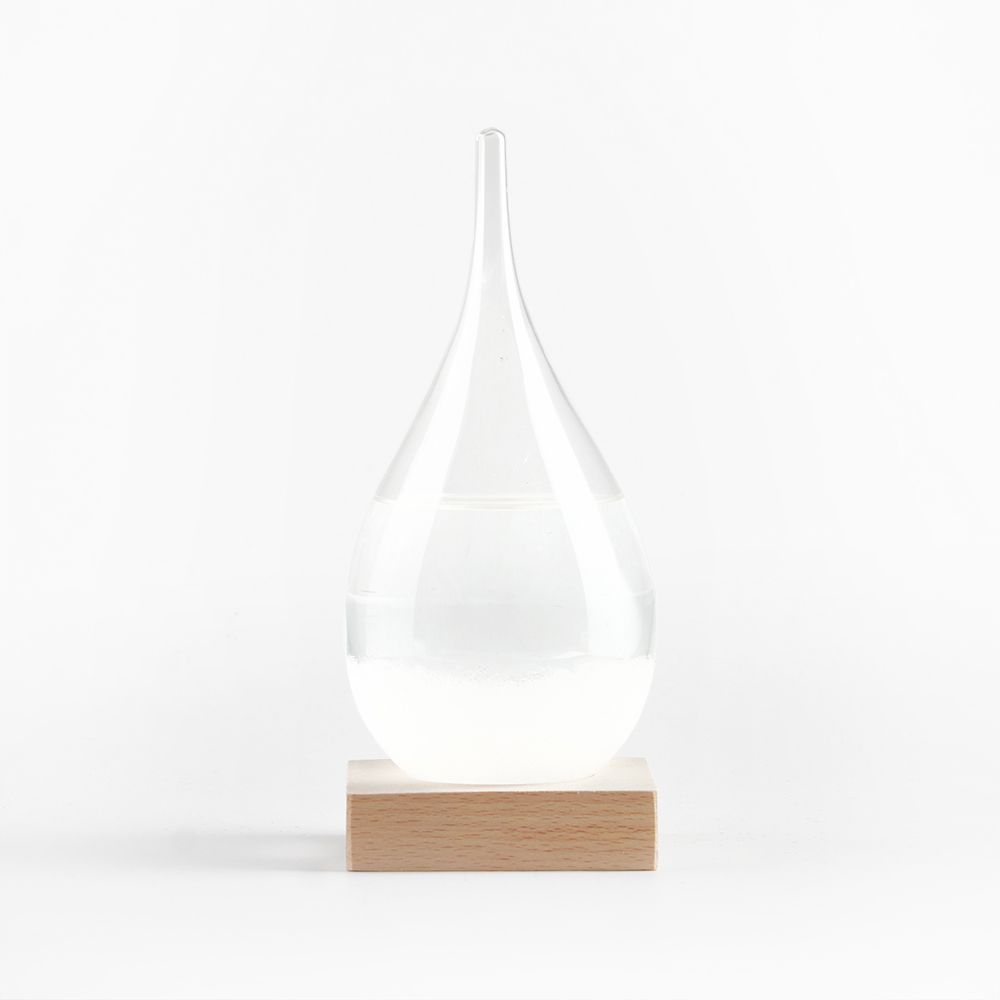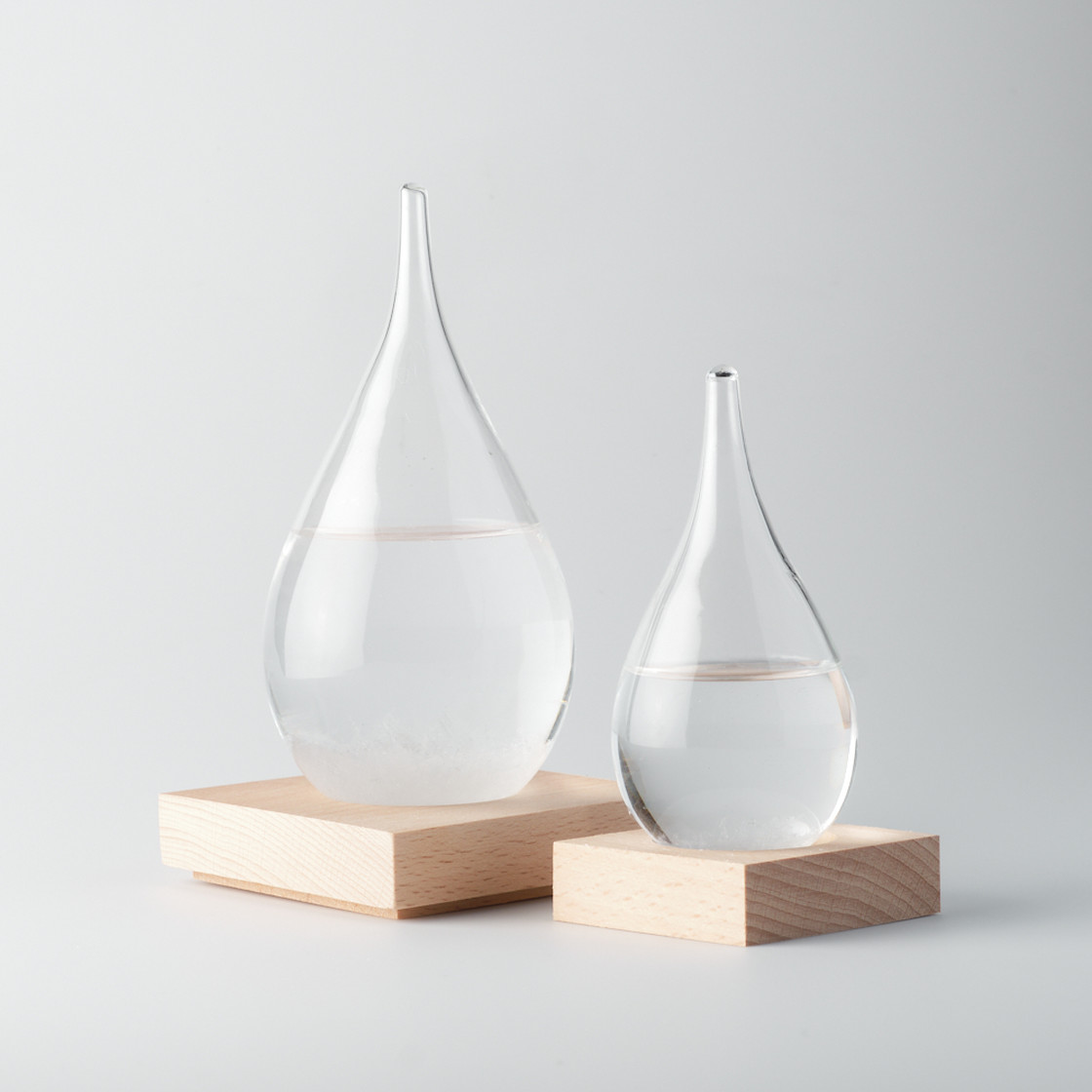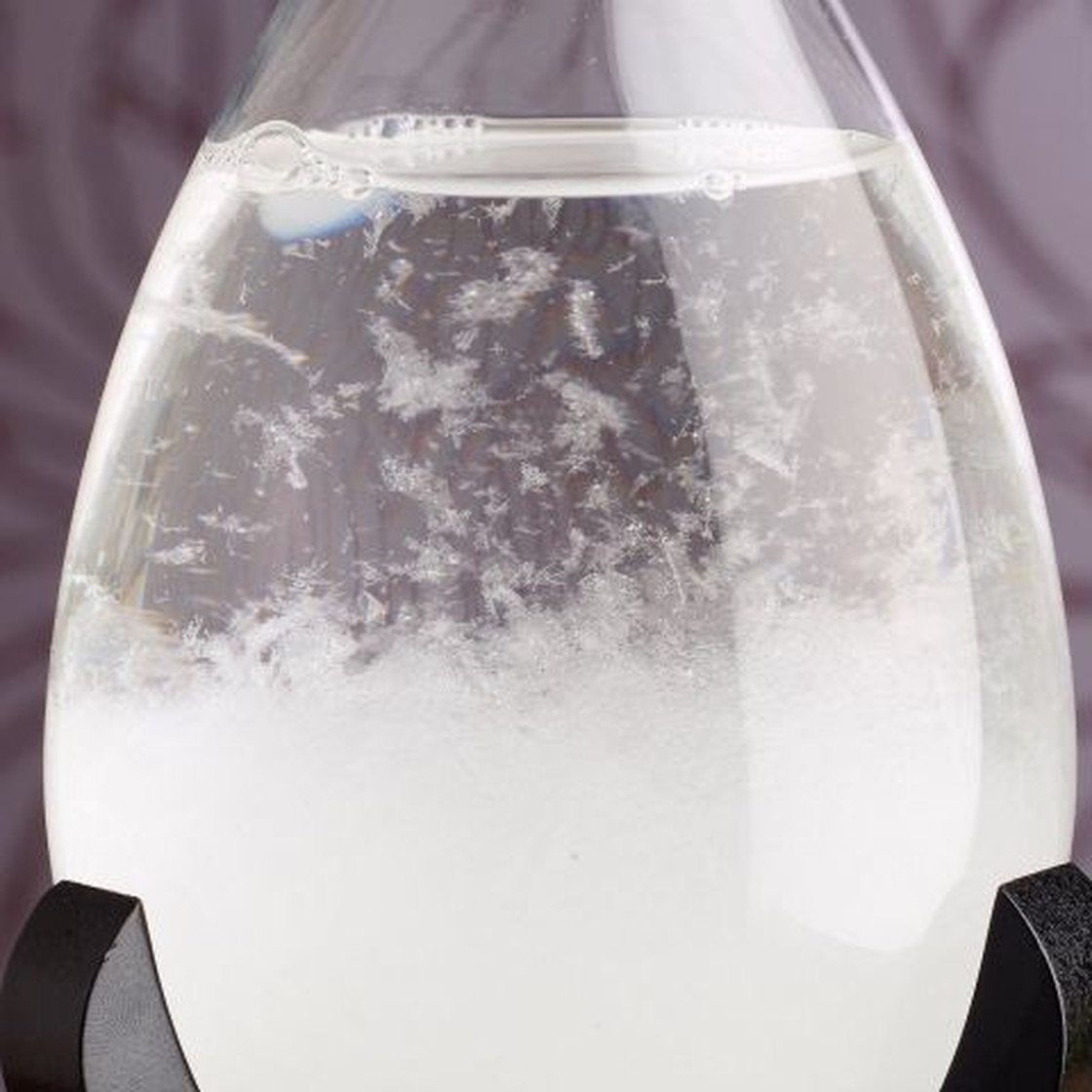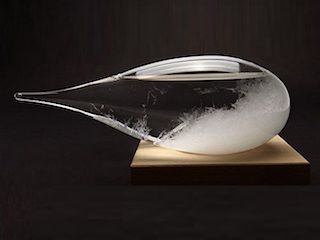The Fitzroy storm glass
You won't be able to read your future from this "glass ball", but you will be able to read the future weather.
The storm glass, also called camphor glass, was invented before the beginning of the 17th century. It consists of an airtight glass body containing a mixture of water, ethanol, camphor, potassium nitrate and ammonium chloride in which crystals form and dissolve depending on the weather conditions. The storm glass is supposed to allow a forecast over a period of about 24 to 36 hours.
It was mainly used by sailors to predict changes in the weather. The storm glass was made famous by Admiral Robert Fitzroy, on whose ship, the HMS Beagle, Charles Darwin travelled and made his groundbreaking discoveries. Together with Darwin, Fitzroy worked out the interpretation of crystal growth during this nearly five-year voyage.
Note: The Fitzroy storm glass is made of thin glass. Not a child's toy!
Drops made of glass, base made of wood
Diameter of the sphere: approx. 8 cm
with detailed explanation of function, history and operation
Dimensions with base: approx. 17.5 x 9.5 x 9.5 cm (H/W/D)
Distributor:
PGI-Skarabäus, Im Kränzliacker 9, 79576 Weil am Rhein, Germany, pgi-shop.de
PGI-Skarabäus, Unterdorfstrasse 23a, 4143 Dornach, Switzerland, pgi-shop.ch
Manufacturer: AstroMedia GmbH, Im Wirrigen 30, 45731 Waltrop, Germany, astromedia.de
Adult supervision:
Children under 14 years of age should use the kit under adult supervision to avoid risks from improper handling.
Risk of injury:
Be particularly careful when handling pointed and sharp parts! Use sharp tools carefully, and if necessary take appropriate safety measures to avoid injuries.
Caution: Breakage can result in sharp edges or splinters.
Fire hazard:
Keep away from open fire and heat sources. Product contains highly flammable materials.
Be careful with light bundling: Do not leave lenses in direct sunlight as they can create a focal point.
Intended use:
The set may only be used in accordance with the enclosed instructions. Independent modifications can impair the functionality and safety of the built model.




